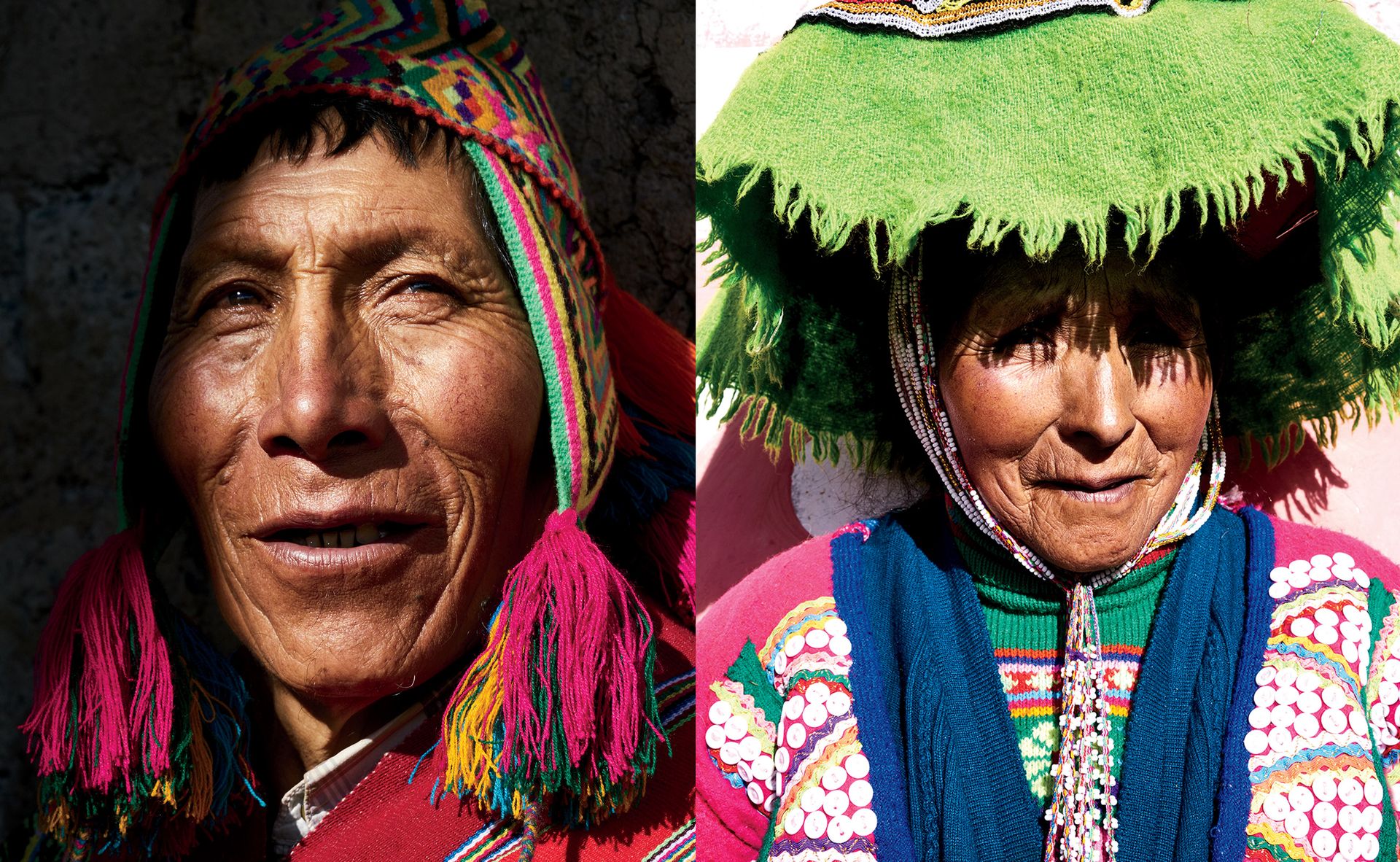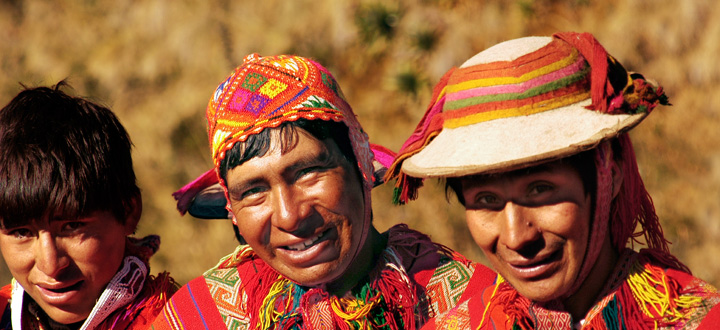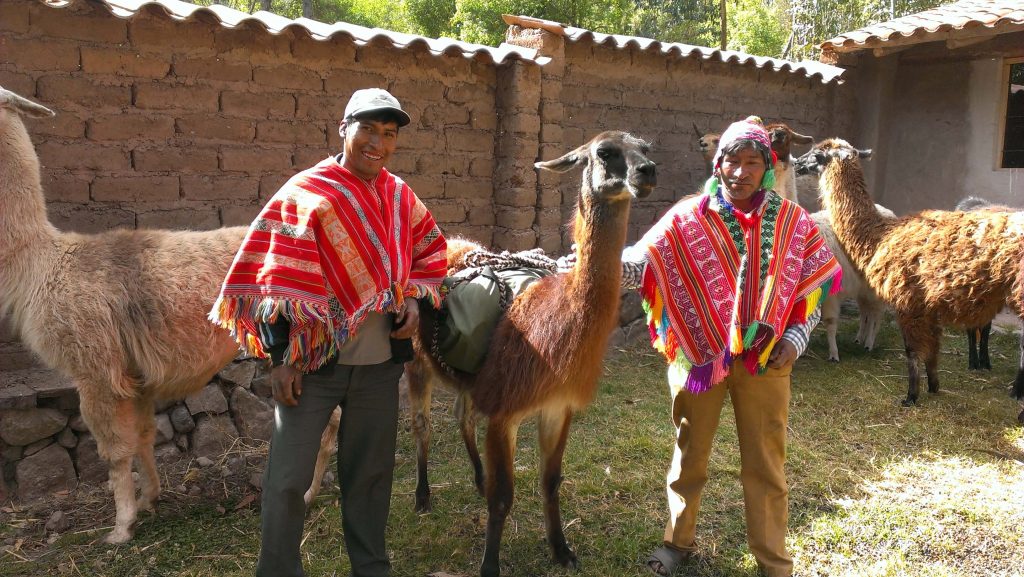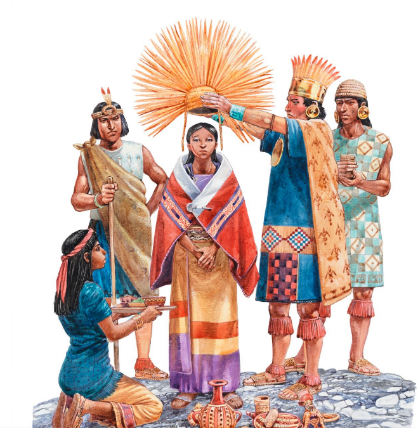The Incas belonged to the Inca Empire, which started in 1438. You can consider them wizards in food production, weaving, engineering, and architecture. Communities produced food for every people in the empire. The Incas were strong people, with the commoners subsisting on two nearly vegetarian meals daily. They were lean in physical body size, height, and weight and had distinct features—faces devoid of facial hair, prominent cheekbones, and nicely shaped straight noses reminiscent of Greek statues.
Everyone dressed the same, although the clothes of the nobility were flashier and made from wool that is more delicate. Each person in the empire was issued two sets of clothes, one for everyday wear, and one for special occasions and ceremonies. While people can wear sandals made from llama or alpaca skin, most prefer to go barefoot. Men adorn themselves more than women do.
Facial Features

Basing the description from available drawings and paintings, the facial features of the Incas resemble other ancient tribes such as the Aztecs. The shape of the face may differ, as rich Incas usually modify the shape of their children’s heads, using two planks on the sides of the skull to elongate it. Some people have long and thin faces, while others have more rounded and broader faces. Most male and female Incas have prominent cheekbones and almond eyes with epicanthic fold typical to Native Americans. The mouth is not overly wide, and the upper lips are thinner while the lower lips are moderately full.
They typically have dark brown to black eyes and a prominent, beautifully shaped nose. Facial skin is brown, while their hair is black but looks blue-black under the sun. Some men file their teeth, and most of their earlobes have ear spools.
Facial Hair

Incas and other Native Americans have facial, and body hair, but the hair growth was not thick enough compared to North Americans, Europeans, North Africans, and Middle Easterners. Facial hair growth for the Incas and other natives was short and fine. By tradition, they do not want hair on their faces; thus, they pluck their facial hair. Some researchers say it was because they considered it vulgar to have facial hair.
But the primary reason is genetics, as studies showed that the ancestry of Incas and other Native Americans was East Asian. Thus, Incas can have thick hair on their head but sparse growth on their faces and the rest of their bodies.
Some artifacts discovered on excavation sites were small tweezers made from mussel shells or hammered metals, confirming that the Incas plucked their facial hair.
Hair Styles

In Inca society, long hair was highly valued. Therefore, it is that important that cutting the hair is a form of punishment for a crime.
Inca women took care of their hair meticulously. They rarely cut their hair. Instead, they neatly combed their hair and parted them in the middle. Some women wore their hair in two long braids, secured with woolen bands in bright colors. Some women tied colorful bands around their foreheads to secure their hair and keep them neat. The wealthy women used a cumbi cloth folded in a particular way to cover their heads.
The males of the Inca tribe could cut their hair. They usually wore a fringe or bangs across their foreheads and allowed their medium-long hair to hang at their backs. The men confined their hair with a sling or used a narrow woven band with various designs.
Nose Shape

Based on the features of Inca descendants, the Incas had straight or Greek noses. A straight nose is quite distinct in its narrow nostrils and straight bridge. Many people desire a straight nose shape, as there is no curve, bump, or lump along the nose bridge. The Greek nose is nearly in proportion to the person’s face. The name came from the old sculptures of Greek gods with beautifully shaped straight noses. The shape of the Inca nose may not be as refined as the Greek nose, but generally, the profile is the same.
Some Incas may have narrower nose bridges, while some are broader. The same is true for the wings or alar sidewalls (flesh on both sides of the nostrils). Some are thinner, but you can also find Incas with broader nose wings. In addition, the tip may be straight and level, while some have nose tips that point downward.
Height

According to scientists who made a study using thousands of DNA variations, the average Inca male person’s height was around 1.6 meters (5 feet two inches). The women are shorter, with the average height at about five feet or 1.52 meters. Based on their studies, the scientist said the DNA variations could affect the height and that a gene variant in about five percent of people in Peru reduces the height of an average person by 2.2 centimeters.
But if the child inherited two copies of this specific gene variant, the person will be 4.4 centimeters shorter. The scientists concluded that this is why most people in Peru and the descendants of the Incas are among the world’s shortest people.
Weight

The ancient Incas have adapted to life in the Peruvian highlands. With their vegetarian diet, most of them were lean. However, it was not evident in the various studies if the average weight is for males or females. The studies only mentioned that the average weight was 60.3 kg (132.9 lbs), although they have higher body fats to insulate their bodies against the cold.
Working in the fields for long hours might also be a reason. Likewise, they had to walk and carry heavy things since there was no wheeled transportation during their time. Inca women had thicker waists, as their tribes wanted. Women considered it a mark of beauty if they had thick thighs and shin flesh. They tied strings above and below their knees to achieve the desired effect on their legs.
Typical Body

Looking at the available drawings and Quechua-speaking Peruvians, considered the direct descendants of the Incas, you can surmise that the ancient Incas were of average body size, not slim but not fat either. However, since they are short in stature, some look bigger in body size, especially the women.
If you base it on their diet, it is safe to assume that their average body size is average. Incas only ate two meals a day. Ordinary Incas’ diet was largely vegetarian, as meat was precious and eaten during special occasions and for the nobility. They do have ch’arki or freeze-dried meat (like beef jerky) that they eat when they travel.
Most people eat amaranth and quinoa porridge, and those living near the coasts have fish. They also ate maize, squash, and root crops like potatoes. In addition, they had pineapples, cactus fruits, elderberries, custard apples, and sour cherries.
Makeup Habits

Inca women did not use makeup. However, Inca priests and warriors decorated their faces, arms, and legs with paint, which is indicative of their status in society. However, the Incas used other forms of head decoration. They had a deep-seated weaving tradition; thus, they created exquisite woven headdresses. The chosen weavers wove gold-trimmed hats with wool tassels for their emperors. The hats also have showy feathers. Some Inca men wore headbands with crowns of feathers, chest coverings, and neck collars.
Incas used war paint and other methods only for ceremonial and special occasions. Black was for mourning, but the preferred colors were purple and red at different times. Inca men had more decorations than women, who only often wore shawl pins and necklaces. It is probable that men also wore earplugs. For military bravery, some men received metal bracelets and necklaces made from the teeth of the enemies they killed.
Skin Tone

The Incas were related to South American Indians, and their skin color reveals their heritage and ancestry. Incas’ skin color range from medium brown to dark brown. You can conclude that their skin color is similar to the Aztecs because most of the available written accounts about them came from outsiders.
But if you base it on the few surviving paintings of Inca leaders and commoners and from the remaining Quechua living in the Andes today, brown, in different tones, is generally the dominant skin color.
Even if you consider that the Incas were a combination of more than 100 ethnic groups at their height, the skin tone did not change. On the contrary, according to some studies, people with darker skin color also have thicker skin, which helps them survive the harsh winter climate up in the Andes mountains and tolerate the hotter temperatures during summer.
Dressing

The Incas’ manner of dressing varied based on their social class. The state supplied each member of society with two sets of clothing, one for everyday wear and one for formal occasions. However, the basic style was similar for all. Men wore tunics (cushma or uncu) that reached above their knees. In addition, they wore either leather sandals or grass shoes. Women’s long dresses (anaku) had a broad braided waistband (chumpi) and reached their ankles. Over it, they had a shawl (lliclla) fastened in front with a metal pin (tupi) or thorn they could also use as a knife for their daily tasks.
Underneath the tunic, the men wore loincloths between their thighs and tied together. They wore an outer garment called a yacolla (blanket) tied over one shoulder. They also carried a chuspa or woven bag with a long strap to keep their possessions, sling stones and coca leaves.